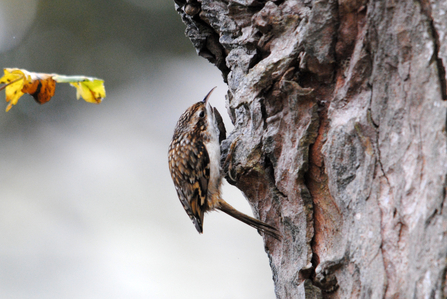Measuring just 12.5 cm in length, the treecreeper is easily recognised by its slender, down-curved bill and stiff tail feathers, which it uses as a prop while climbing tree trunks in a spiral fashion. Their curved toes also help them cling to the bark. Unlike the nuthatch, which can move both up and down tree trunks, the treecreeper almost always ascends. Once it reaches the top, it flies down to the base of the next tree to begin the process again.
Its foraging style is just as fascinating. With its curved bill, the treecreeper probes into the tiniest crevices of bark to find insects, spiders, and other invertebrates. During winter, when these food sources are harder to come by, it will supplement its diet with seeds, helping it survive the leaner months.
Treecreepers live in mature woodlands and can also be found in large gardens and parks, particularly where old trees provide ideal feeding and nesting opportunities. Despite being widespread, they can be hard to spot. Their mottled brown and white plumage blends seamlessly with tree bark, offering them excellent camouflage from predators, and from people.


